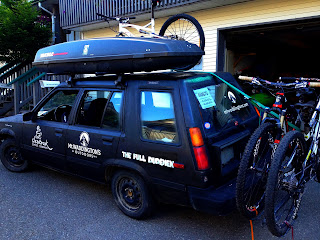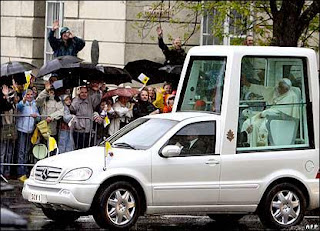I don't want to sensationalize it - it's a significant natural disaster that has had major impacts on people's lives and will take years to clean up, and that's no fun. So just some notes and one unhappy story:
Canmore got hit first. Cougar Creek, usually a trickle, cut through the town, overflowing and eroding its banks, and then taking out houses, roads, and bridges. The Elbow and Sheep Rivers, classic foothills creek runs, erupted. They took out their own access roads and then the towns below. On Thursday, sitting at my cubicle at work, I did not work. I read the news from upstream and I knew it was coming.
By the end of the workday, the water had started to make its way into the city. 100,000 people were evacuated. I live in an old building, about 50 m from the confluence of the two rivers through the city. It was evacuated and they shut off the power and gas. I emptied out my basement, parked my car up the hill, filled the sinks with water, and stayed the first night.
In the morning, the river was higher than it's ever been - at least since they started measuring - but the building and Inglewood were still dry. Other areas were less fortunate. All the bridges were closed, some underwater. Many neighborhoods along the Bow and Elbow had flooded badly. The Elbow is usually 20 m wide and it was now more than a km wide. The stadium had water 14 rows deep. Islands in the Bow had vanished, including a huge park downtown and the one the zoo is on. Downtown was under water. The city was a mess and at an standstill.
On Saturday, the situation had stabilized. The rivers were still near their peak, but they were slowly coming down.
I put a call out and said I was willing to go into the flooded areas in my boat to retrieve anything vital. A few people called and asked if I could get some cats out. The cats were in Erlton, now in the middle of the river, in a flooded house. But I thought I've give it a shot.
I met Sandra at the riverbank and got her keys. She described where her house was and gave me the address. By my understanding, I had to go across the river from where we were.
I paddled through a neighborhood, then a big park, and eventually reached the main current. There was a bridge - 25th Ave. - below and at water level, with a lot of debris - cars, appliances, fences, and roofs - piling into it. Most of the water was running off the bridge and to the right into a neighborhood. The other side of the river had a higher bank and was calmer, so I crossed above the bridge. I had to get out on the other side to go over a concrete barricade. On the other side of the barricade, it was flooded but not really moving. There were a lot of fences and other debris between the buildings, and it didn't seem passable by boat. But I was close to where I thought the house was, so I decided just to swim there. When I got to the right block, there were a few people stuck - but doing fine - on their balconies, so I asked for directions. I was on the wrong side of the river. So I swam back to the barricade, got back in my boat, and ferried across again.
Now I needed to head downstream, but on the other side of the 25th Ave. bridge. The river was ripping through here, real rapids with cars, fences, and houses making features, and there was a lot of debris in the current. I picked my way through it carefully and a block downstream it opened up. I was on the right street! So I paddled to the address and got out.
The main floor of the house was a meter above the water level, so it was easy to get in. I found one of the cats - Bo - right away. Bo was calm. I picked him up and put him in my backpack with nary a complaint. The other cat - Milo - was upstairs and very upset. He was bounding from surface to surface, knocking things over, running around at warp speed, and clearly disturbed.
I cornered and caught him the first time 10 minutes later. As I took him down the stairs, he lunged at my face and cut it. I dropped him. I caught him again a few minutes later and this time held him far away. Again, he lunged, and this time bit me in the hand. I dropped him again. I got a sheet and the next time I cornered him, I threw the sheet at him, pinned him down, and wrapped him up. I put the bundle in my backpack, then pulled out the sheet. Mission accomplished, so I thought.
I was a little worried about having cats in a backpack, but they calmed down almost right away. As I paddled back, I checked on them every minute or two and they seemed fine. When I got to the bank, I opened the top of the bag so they could get more air and walked back to the cars.
Sandra went in her car with the backpack to let the cats out. Much to her and my dismay, Milo was dead. I think he probably had a heart attack. He was stressed from the start and I don't think I made him any more comfortable. RIP Milo. Bo was fine and went to hide under a car seat.
Since, I've spent most of my time teared out drywall and carpet in basements and on main floors of houses swamped by the flood. The clean-up is going surprisingly fast - I would say most houses are past the first clean-up phase of getting everything wet out - and there were thousands of houses where this needed to happen and fast. The rebuild phase will take months, if not years, but can proceed at a more measured pace.
In the meantime, access to many of the parts of the parks and K-country is cut off. Hwy 40, into the Kananaskis drainage, has 40 washed-out sections. The bridge into the Elbow drainage, home to a great creeking run and many of our best mountain bike trails, is completely gone. Both whitewater 'parks' - the Kananaskis and Harvie Passage - are severely damaged and will take a long time to put back together.
Some pictures:
(The Bow and the East Village)
(The Elbow River, cutting the elbows)
(Cougar Creek in Canmore and the Trans-Canada Hwy)
(Livingston Place, home to Mercer)
(A K-country bridge)
(The south LRT line)



































